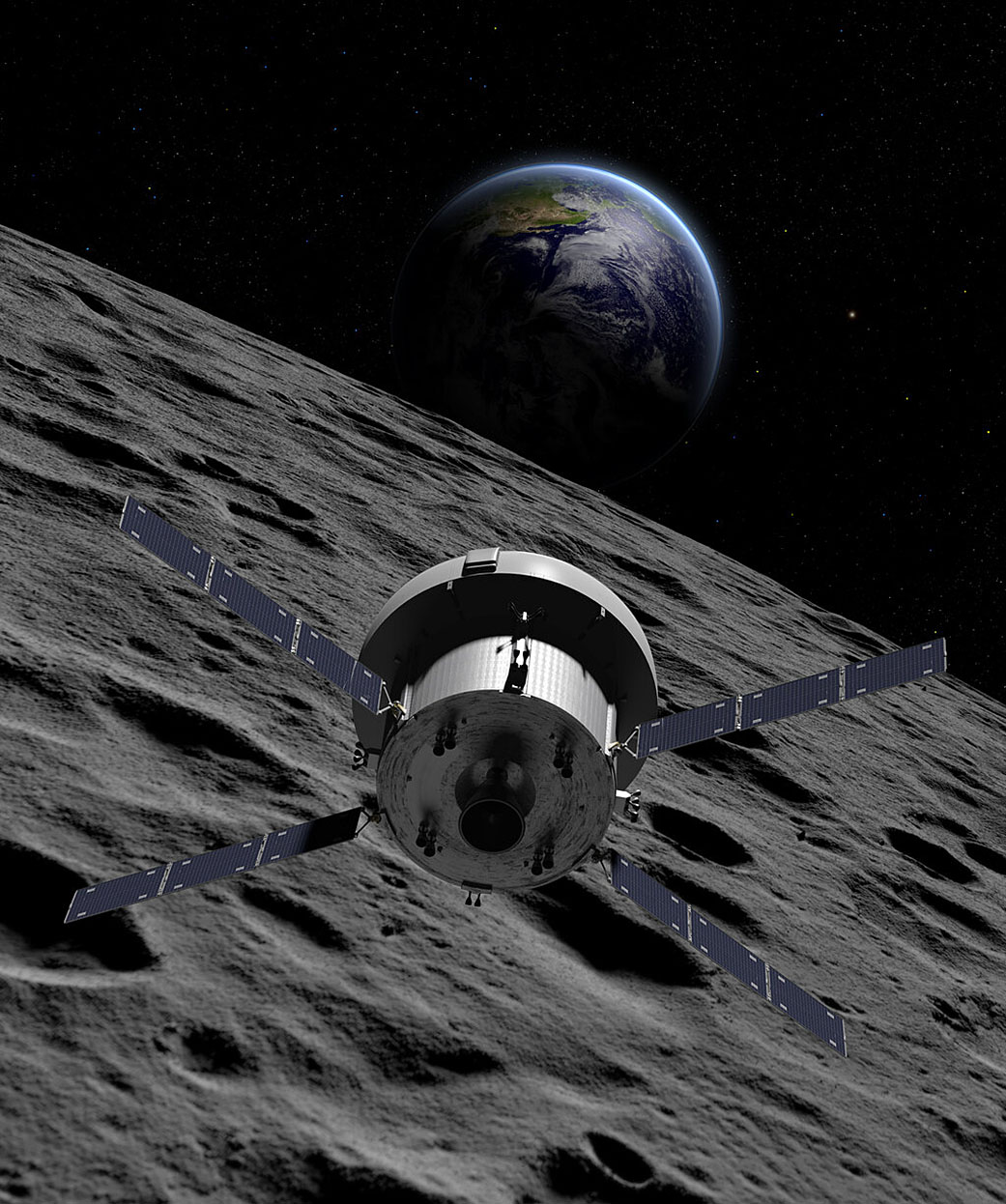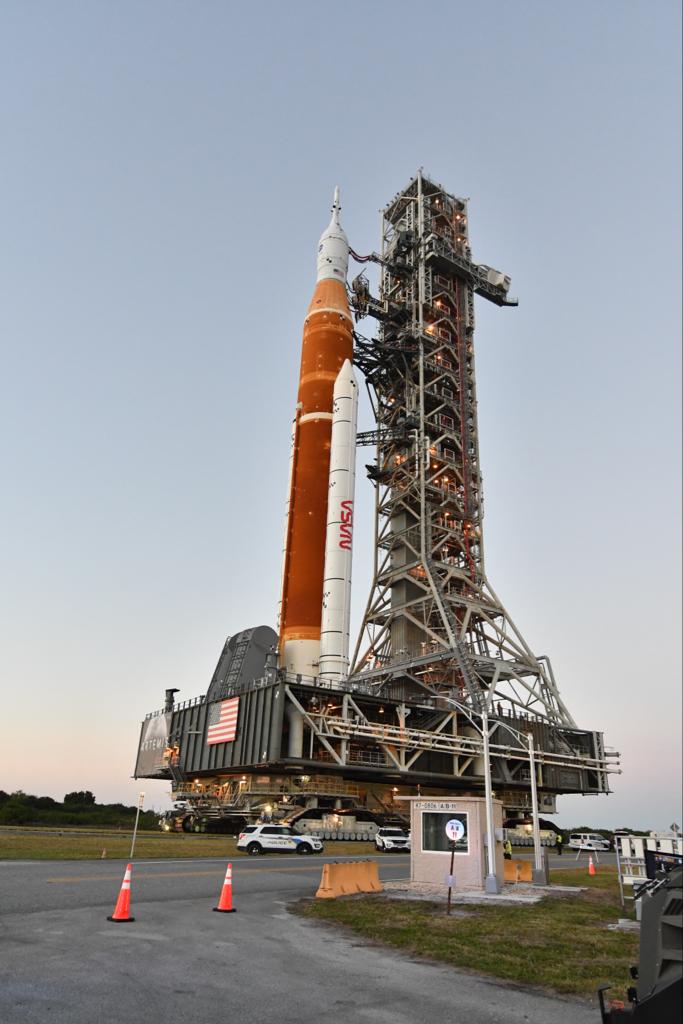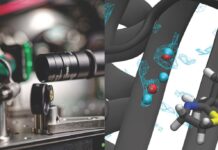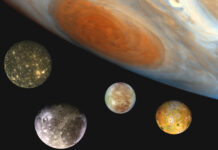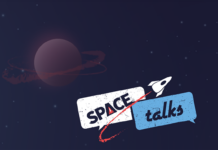The dark, silver desert longs for the pressure of our feet again. The Artemis program aims for this next big step for humanity, not to visit, but to stay on the Moon.
The six Artemis missions consist of three phases: flying humans to the Moon and back to the Earth on board the Orion spaceship, assembling a space station orbiting the Moon, and landing on the Moon’s surface.
The first phase involves significant European participation. Under contract with the European Space Agency, the company Airbus Space and Defense is responsible for designing and constructing Orion’s service module for the six missions that will propel the journey and sustain the life of the astronauts.
Orion’s European powerhouse
The Orion spaceship, which has the height of a two-storey house, comprises two sections: the crew module and the European Service Module.
The European Service Module is Orions’ powerhouse. It will propel and steer the spaceship through its thirty-three thrusters. The electricity for the computer and other services will come from its four seven-meters solar panels.
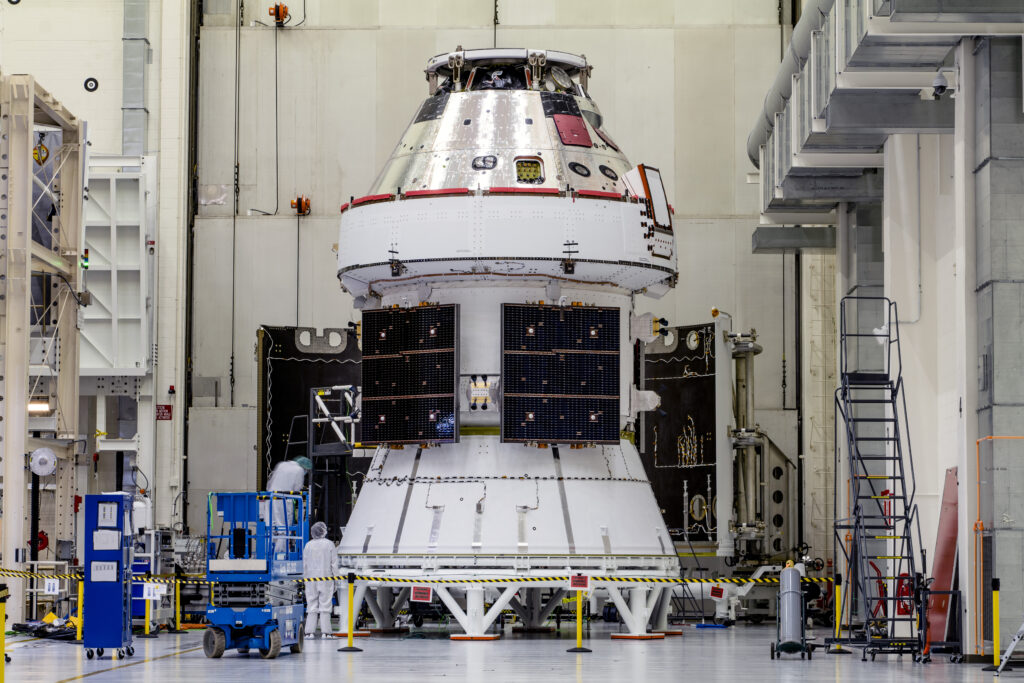
It also contains the spacecraft’s thermalization system. Orion will face multiple extreme changes in temperature (from -70 °C to +90 °C) that affect the crew and the spaceship electronics; for this reason, it is paramount to count on a system that will maintain the spaceship at a constant temperature.
The European Service Module will also supply breathing air (our earthly mixture of nitrogen and oxygen) and water to the crew and provide Orions’ solid structure, pretty much like the chassis of a car.
NASA and ESA engaged in an unprecedented collaboration
For decades, the European Space Agency has played a leading role in space exploration. During its long-standing collaboration with NASA, ESA delivered supplies over the course of several missions to the International Space Station, operating the Automated Transfer Vehicle. With this vehicle, designed and constructed by Airbus Space and Defense, ESA mastered automated docking and demonstrated its readiness to go further in deep space exploration involving humans.
This experience, together with many other relevant missions to Mars and other planets in our solar system, makes ESA a desirable major partner for NASA to carry out the Artemis program.
According to Philippe Deloo, ESA’S Orion Project Manager, this is a step beyond the cooperation that NASA and ESA have had in the history of space exploration.
Artemis I at a critical test before launch
Artemis I, the first of the six planned Artemis missions, is an uncrewed test flight to the Moon and back to the Earth. The Orion spaceship will orbit the Moon once or twice during this operation. According to Didier Radola, Airbus Orion Program Manager, the total flight will take from twenty-nine to forty-two days.
Compared with Apollo 17, which was the longest Apollo mission at twelve days, the Artemis program is designed for the astronauts to stay much longer. For that reason, two mannequins will be seated in Orion’s crew module to chart the amount of radiation during these long trips.
Philippe Delooc commented that, up to now, NASA has considered two launch windows: one from May 7 to May 21 and another from June 6 to June 16.
The first European Service Module that Artemis I will use was sent from Bremen, Germany, to NASA in 2018. It is integrated into the Orion spaceship, which is by now on top of the SLS rocket at the Launch Pad 39B at NASA’s Kennedy Space Center. The Big Ben tall rocket is currently at its wet launch rehearsal, a series of test involving loading fuel and checking that every system is working as expected during the countdown.
Dates for the crewed missions Artemis II and Artemis III are still under consideration. NASA has announced that Artemis II will be launched in 2024 while Artemis III in 2025; however, these dates are always subject to uncertainties. In any case, NASA is determined to take the next man and the first woman to walk on the Moon before the end of this decade.
The Artemis program is the beginning of a new space era for humanity. It will pave the way for colonizing the Moon and beyond. European technology will power crewed missions where no humans have gone before.
Featured illustration: NASA.
